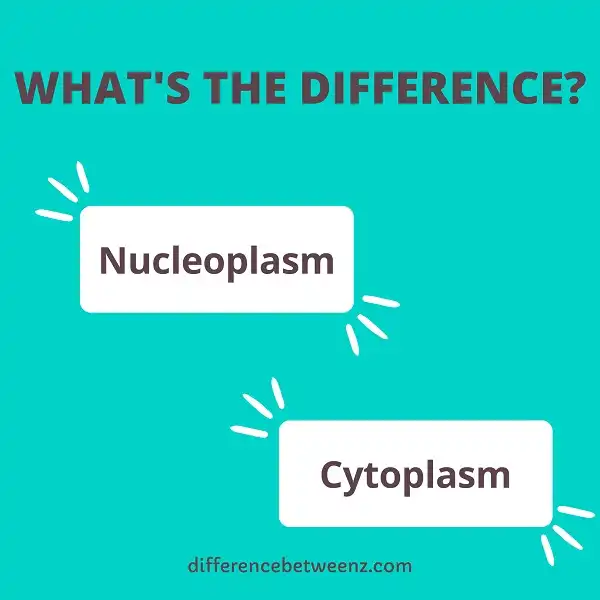Nucleoplasm and cytoplasm are two important components of a cell. Nucleoplasm is the fluid inside the nucleus, while the cytoplasm is the fluid that surrounds the cell membrane. Each component has unique properties that contribute to the overall function of the cell. In this blog post, we will discuss the difference between nucleoplasm and cytoplasm, and explore how each component contributes to cellular function. Stay tuned!
What is Nucleoplasm?
Nucleoplasm is the semi-fluid substance that fills the nucleus of a cell. It contains the chromosomes, which carry the genetic information, as well as proteins and other molecules necessary for cell function. Nucleoplasm is enclosed by the nuclear membrane, which separates it from the rest of the cell. The nuclear membrane is perforated by pores that allow small molecules and ions to pass through. Nucleoplasm is a viscous liquid, and its consistency can vary depending on the cell type. In some cells, it is thick and sticky, while in others it is thin and watery. Nucleoplasm plays an important role in cell division, as it helps to align the chromosomes during mitosis. It also provides support for the nuclear envelope and prevents the chromosomes from becoming tangled. Nucleoplasm is a vital component of cells, and without it, they would not be able to function properly.
What is Cytoplasm?
The cytoplasm is a semi-fluid substance that fills the interior of cells. It is composed of water, ions, and a variety of biomolecules, including enzymes, RNA, and proteins. Cytoplasm plays a variety of roles in cells, including providing a medium for metabolic reactions and cell signaling, storing nutrients, and helping to maintain cell shape. In addition, the Cytoplasm is responsible for the movement of organelles within cells. The cytoplasm is found in both prokaryotic and eukaryotic cells and is enclosed by the plasma membrane. The cytoplasm is a complex mixture of molecules in constant motion. The Cytoplasmic matrix consists of water, inorganic ions, small organic molecules, and macromolecules. The cytoplasm also contains a variety of organelles suspended in it. These include mitochondria, ribosomes, endoplasmic reticulum, Golgi apparatus, lysosomes, peroxisomes, vacuoles, and vesicles. Cytoplasm provides both the physical support for organelles and the environment in which chemical reactions take place.
Difference between Nucleoplasm and Cytoplasm
Nucleoplasm is the jelly-like substance that fills the nucleus of a cell, and cytoplasm is the gelatinous material that fills the rest of the cell. Both are made up of water, but nucleoplasm also contains proteins and other molecules that help to support and protect the nucleus. Nucleoplasm is also denser than the cytoplasm, due to the presence of these extra molecules. In addition, the nucleoplasm is surrounded by a nuclear membrane, while the cytoplasm is not. This membrane helps to keep the contents of the nucleus separate from the rest of the cell. As a result, nucleoplasm and cytoplasm are two distinct substances with different functions within a cell.
Conclusion
Nucleoplasm and cytoplasm are two important cellular components. The main difference between them is that nucleoplasm contains the genetic material, while cytoplasm does not. The cytoplasm also contains organelles, which help the cell function. By understanding these differences, we can better understand how cells work and what goes on inside of them.


